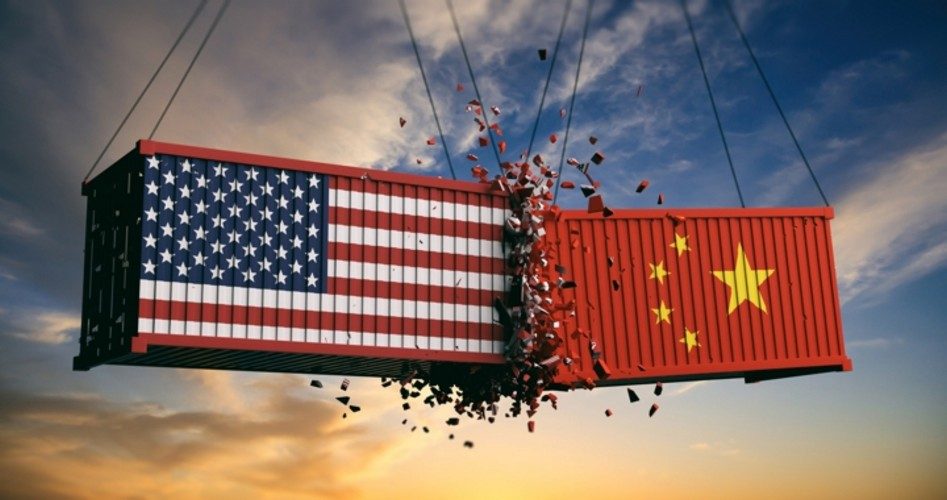
The underlying assumption in U.S. foreign policy seems to be that by applying pressure economically, China will be forced to agree to a trade deal. Richard Koo, chief economist at Nomura Research Institute, Japan’s largest economic research firm, thinks that policy is working: “I suspect the increasingly pronounced slowdown in China’s economy, coupled with recent employment data pointing to continued strength in the US economy, are putting heavy pressure on China to settle sooner rather than later.”
Koo assumes that the numbers coming out of China are reflective of reality there. At six percent growth per year, China’s economy (using the mathematical Rule of 72) will double every 12 years. If the U.S. economy is growing at two percent annually, its economy will double every 36 years. Simple math dictates that at some reasonably short time in the future, China’s economy will equal that of the United States, with all manner of political ramifications following.
As Michael Pillsbury pointed out in his monumental Hundred-Year Marathon: China’s Secret Strategy to Replace America as the Global Superpower, the communists running China expect their economy to be triple the size of the U.S. economy in 2049, the 100th anniversary of their 1949 takeover.
But what if the numbers emanating from China’s controlled media are wrong? What if China’s economy isn’t 70 percent the size of the U.S. economy, but is actually vastly smaller? Equally important is this: What if the U.S. economy is growing faster than forecasters are predicting?
University of Michigan economists just trumpeted: “Get ready for a continued slowdown ahead, as [U.S.] growth slides from 2.9% a year ago to 2.3% this year, and to 1.7% in 2020-21.”
The economists claim that new home construction “boosted GDP by nearly two-tenths of a percentage point in the third quarter.” According to the Wall Street Journal, however, the housing market is even stronger, with existing home sales jumping nearly two percent in the month of October compared to September, and nearly five percent compared to a year ago. October marked the fourth straight month of year-over-year gains in existing home sales. This, coupled with home-builder confidence touching recent highs, new home construction climbing nearly four percent last month from September, and the rise in residential construction permits in October, bodes well for the U.S. economy to outperform the experts at UMich.
Those are real numbers. The numbers from China? Not so much. Professor Luis Martinez at the University of Chicago thinks that China’s numbers way overstate reality in that totalitarian communist dictatorship where for 40 years it’s been in the best interests of the rulers to make things look better on paper than they are in reality. In his study “How Much Should We Trust the Dictator’s GDP Growth Estimates?,” updated in August, Martinez concluded: “GDP growth statistics are self-reported by governments and prone to manipulation, while the nighttime lights recorded by satellites from outer space are not.”
To see for yourself what Marinez means when he says “nighttime lights” show how economies look from outer space, check out the National Geographic’s Night Satellite Photos of the Earth.
Continues Martinez:
The magnitude of this [economic] manipulation is substantial. I estimate that the most authoritarian regimes inflate yearly GDP growth rates on average by a factor of 1.15 to 1.3.
Adjustment of the GDP growth figures for manipulation changes our understanding of relative economic performance at the turn of the 21st century and downplays the apparent economic success of countries with non-democratic forms of government [i.e., China].
Martinez then calculates that China’s GDP isn’t $15 trillion, but half that, at “roughly $7.5 trillion.” That means that China’s economy isn’t 70 percent the size of the U.S. economy, but less than a third.
This means that Chinese communists’ goal of having an economy triple that of the U.S. by 2049 will just be another “five-year plan” gone awry.
This mathematical dance is in no way intended to diminish or otherwise minimize the threat to America posed by the thugs and tyrants ruling China. It means that in the real world, China is a much smaller presence than it declares itself to be.
It is likely that President Trump is aware of all of this, which explains why he is very happy to wait for the Chinese to come to his table for serious negotiations, and if not, then he’ll continue to ratchet up the tariffs until they do.
Image: Rawf8 via iStock / Getty Images Plus
An Ivy League graduate and former investment advisor, Bob is a regular contributor to The New American, writing primarily on economics and politics. He can be reached at badelmann@thenewamerican.com.
Related article:
China Using “Thousand Talents Plan” to Steal U.S. Technology and Become World Hegemon



